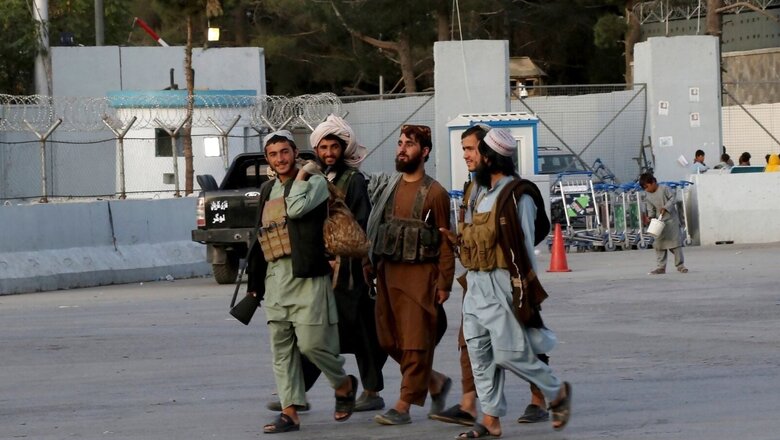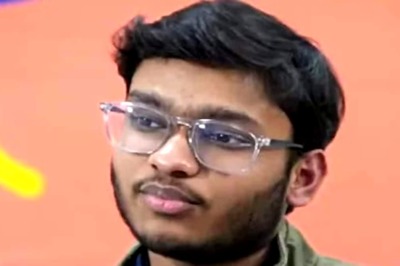
views
With America ending its longest war on Tuesday as the final stream of US cargo planes soared over the peaks of the Hindu Kush transporting the remaining forces out of the war-ravaged country, the Taliban have escalated efforts to form a new government to resurrect the nation that has been in the throes of a long-standing humanitarian and economic crisis.
Sources told CNN-News18 that the insurgents are designing a government based on Iran’s model – an Islamic republic where the Supreme Leader is the head of state and the highest-ranking political and religious authority even above the president.
Taliban’s supreme leader Hibatullah Akhundzada — who has never made a public appearance and whose whereabouts have largely remained unknown – will most likely be the Supreme Leader, presiding over a Supreme Council of 11 to 72, sources added.
The Supreme Leader will mostly work out of Kandahar.
The Taliban have been in a huddle in Kandhar for the last four days to put in place their new government that is going to be, as per their own promises, more inclusive and ‘broad based’. Sources said a decision is likely to be finalised within a week.
“Pakistan is deeply watching the government formation discussions and wants sensitive portfolios for people close to them,” the source told CNN-News18 on the condition of anonymity.
The governing body’s ‘Executive Branch’ will be headed by the Prime Minister who is most likely to be either one of Akhundzada’s deputies – Mullah Abdul Ghani Baradar, one of the co-founders of the Taliban, who now heads the political office of the insurgent group and is part of the negotiating team that the group has in Doha. Or Mullah Yakub, who is the son of Mullah Omar, who “manages ideological and religious affairs”.
Baradar, reported to have been one of the trusted commanders of Taliban founder Mullah Omar, was captured in 2010 by security forces in the southern Pakistani city of Karachi and released in 2018.
The ministries will be under the PM, and the Constitution of 1964-65 could be restored, with some modifications.
Abdul Hakim Haqqani is likely to be the Chief Justice. He is head of the Taliban’s negotiating team and is said to be a trusted aide of Akhundzada. Haqqani had been keeping a low profile since 2001 in Pakistan’s Quetta where he reportedly ran a madrassa. In September 2020, He was appointed chief negotiator for intra-Afghan talks. He also leads a senior council of religious scholars.
Ground reality
Despite its big public promises of granting amnesty to those who worked with the former regime, sources say that the reality on the ground is pretty different and coincides with the one the Taliban practised years ago when it ruled Afghanistan, and what its citizens had feared after their second coming this time.
Some of the people who worked in the Afghan army and Intelligence community are being targeted, and the killings are being kept a secret to avoid media attention, unlike their usual very public executions.
At least 2,00,000 people have left Afghanistan since the Taliban took over on August 15.
And at least 70 Afghanistan missions have decided to keep their consular services working while awaiting diplomatic engagements until there is clarity, sources said.
Anti-Taliban Resistance resisting no more?
Sources say that talks are on between Ahmed Masood and the Taliban.
Masood, the son of Ahmad Shah Massoud, one of the main leaders of Afghanistan’s anti-Soviet resistance in the 1980s, who had pledged to hold out against the Taliban from his stronghold in the Panjshir valley, is currently in the process of negotiating a deal with them. The Taliban are not inclined to negotiate with Amrullah Saleh, Afghanistan’s former vice president who declared himself president after Ashraf Ghani fled the country with his family.
Access
No commercial flights from Kabul will operate for now, as there is no radar at the Hamid Karzai Airport after US forces left. The UN is trying to get it working again and may take a fortnight.
The Taliban triumphantly marched into Kabul’s international airport on Tuesday, hours after the final US troop withdrawal. In a show of control, turbaned Taliban leaders were flanked by the insurgents elite Badri unit as they walked across the tarmac. The commandos in camouflage uniforms proudly posed for photos.
Getting the airport running again is just one of the sizeable challenges the Taliban face in governing a nation of 38 million people that for two decades had survived on billions of dollars in foreign aid.
Read all the Latest News, Breaking News and Assembly Elections Live Updates here.
















Comments
0 comment